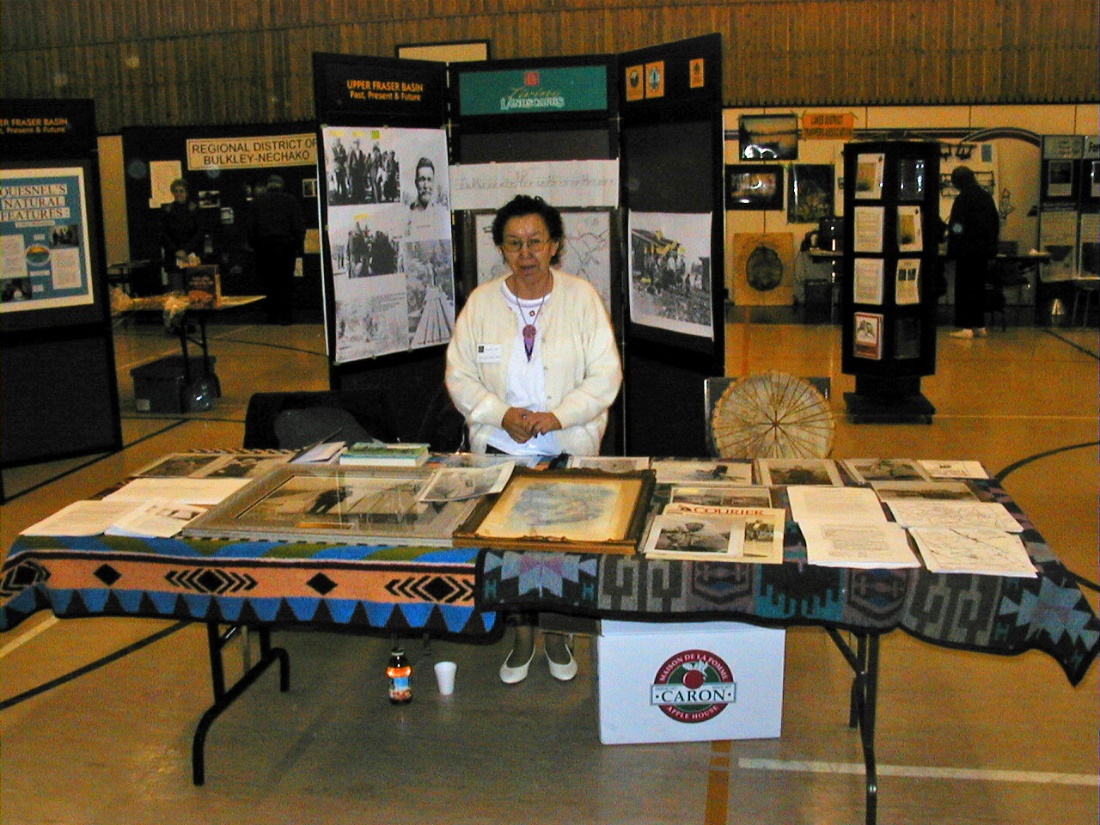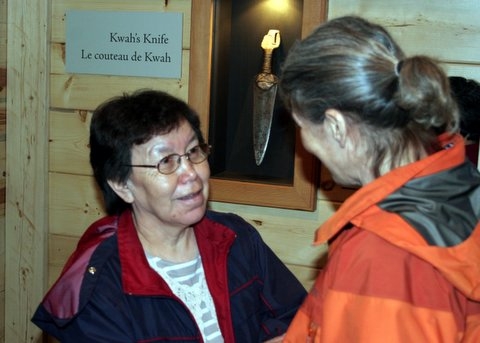Post Script, to article on Kwah’s Dagger.
Transfer of the Famous Kwah’s Dagger to the Nak’azdli People. Grant Keddie. 2012.
The Royal British Columbia Museum, had in its stewardship a famous dagger associated with the story of a prominent Nak’azdli First Nation, from the Fort St. James area of Northern B.C., known as Chief Kwah. I assisted the Nak’adzli Band and Parks Canada in a successful submission to the Monuments Board of Canada to have Chief Kwah recognized as a National Historic Figure. The story of the dagger is interwoven with the history of Sir James Douglas, K.C.B., the second Governor of the Colony of Vancouver Island and the first Governor of the Mainland Colony of British Columbia.
The dagger was a subject of my research and public programming that the RBCM undertook in 2002-2003, as part of our Living Landscapes Programming in northern British Colombia. Lillian Sam (Tsekeyaz) of the Nak’azdli Nation was an important part of this program (see figure 1). Tsekeyaz is the granddaughter of Chief Louis Billy Prince.

I took the dagger to Fort St. James National Historic Park on May 20, 2006, to be part of the grand opening of a Nak’azdli exhibit with the dagger being a special feature related to Chief Kwah. The exhibit was developed by the Nak’azdli Elders & Advisory Group working with the staff of Fort St. James National Historic Park.
The ceremonies involved a grand opening speech by Ron Hooper, a welcome speech by Chief Leonard Thomas of the Carrier Nations, an introduction to the Kwah display by Elder Bob Antoine and an introduction to elder Lillian Sam. This was followed by myself presenting and overview of the history of the dagger and Lilliam Sam making a presentation and giving a gift to the Munro family for the role that James Munro played in being a friend of Chief Louie Billy and helping save the dagger. We all then had a viewing of the new Kwah display.
In consideration of the history of this dagger and the Museum’s Aboriginal Material Operating Policy, the RBCM recognized its particular significance to the Nak’adzli people and has transferred the ownership of the dagger to the Nak’azdli Band Council as a significant object.
